On Air Now
Radio X Chilled with Sarah Gosling 12am - 1am
30 June 2022, 15:37 | Updated: 30 June 2022, 16:54
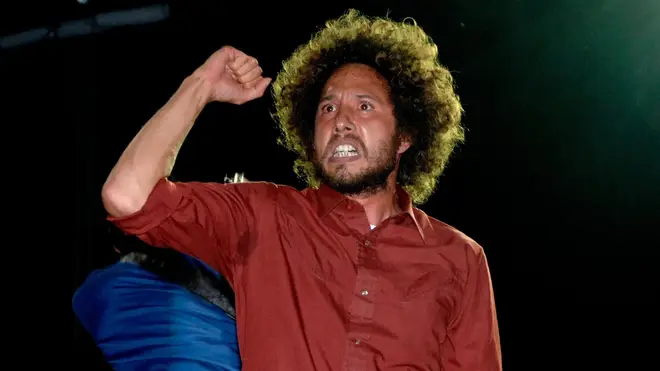
RATM's 1992 song continues to be relevant, 30 years later. But why did the band record such a ferocious song in the first place?
Vancouver's KISS 102.9 has been playing Rage Against The Machine's Killing In The Name non-stop this week, after employees learned that two morning presenters would be let go after changed to the station.
It's heartwarming to see that, even 30 years after its release, Killing In The Name is still the ultimate form of protest through music.
Vancouver’s KISS-FM radio station 102.9 has not stopped playing Rage Against the Machine’s “Killing in the Name” for the past 10 hours after two beloved morning show DJs were laid off. https://t.co/vFbS2BMqLs
— Rolling Stone (@RollingStone) June 29, 2022
Some people don't get it, however. In June 2020, Rage guitarist Tom Morello was outspoken in his support of the Black Lives Matter protests which sprang up around the world in the wake of the death of George Floyd, who died the previous month while being arrested by Minneapolis police.
Morello's messages prompted one fan to attack him on Twitter. He said: "I used to be a fan until your political opinions came out. Music is my sanctuary and the last thing I want to hear is political BS when I'm listening to music...
An exasperated Tom Morello replied: "What music of mine were you a fan of that DIDN't contain 'political BS'? I need to know so I can delete it from the catalog."
Morello's incredulity is understandable. If there was ever a band whose very reason for existing was to "be political", it's Rage Against The Machine. Their very name evokes struggle against the establishment and their most famous song is an anguished howl of injustice at an incident that took place nearly 30 years ago... an incident that aroused similar outrage to the protests that followed the death of George Floyd in May 2020 .

Rage Against The Machine - Killing In the Name (Official Music Video)
Killing In The Name was released as a single on 2 November 1992 as the first single from Rage Against The Machine's debut album.
The band was formed the previous year in Los Angeles. Vocalist Zack de la Rocha was born in Long Beach to a Mexican-American father and his grandfather was a Mexican revolutionary. Guitarist Tom Morello was a Harvard-educated New Yorker, whose father was a Kenyan diplomat involved in the Mau Mau Uprising and his great-uncle was Jomo Kenyatta, Kenya's first elected president.
Bassist Tim Commerford had French and Irish ancestors, while drummer Brad Wilk was Oregon-born, but raised in California. All members started out in bands that were either metal or hardcore punk - with all the political concerns that genre embraces.
Rage Against The Machine named themselves after a phrase from a politically-minded punk fanzine called No Answers. Their demo cassette was dressed in newspaper cutting from the stock-market pages, with a match taped to the front. The very band name gave some hint as to what they thought of the establishment.
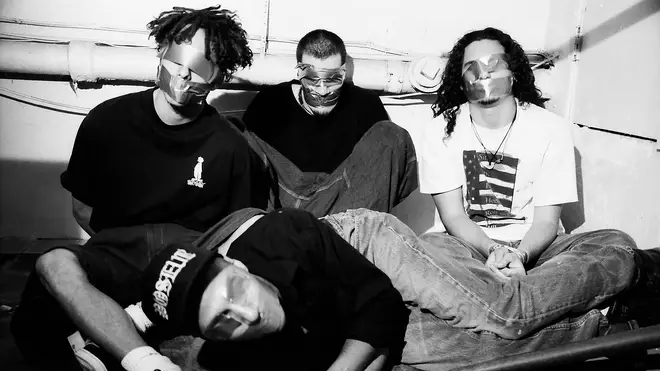
As the initial ideas for Rage came together, one of the most notorious incidents in modern American history took place.
On 3 March 1991, Rodney King and two friends were driving through the San Fernando Valley in LA after an evening drinking and watching basketball. Members of the California Highway Patrol spotted the car speeding and a chase ensued. Members of the Los Angeles Police Department arrived to assist in the arrest. When the car was pulled over, the LAPD officers forced the men to lie on the road. They later claimed that Rodney King resisted arrest - he was tasered and fell to the floor. As King struggled to get up off the floor, he was beaten by four officers with batons; he was hit more than 50 times.
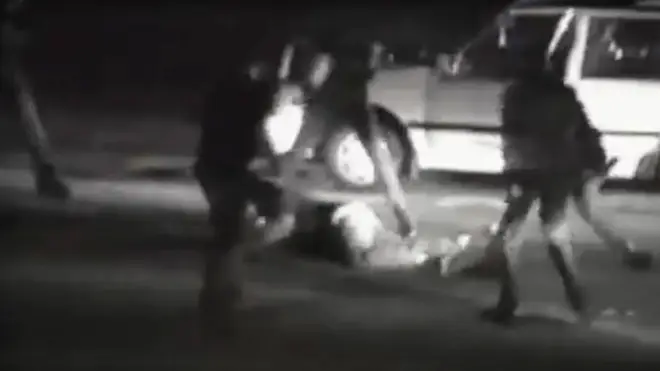
From a house across the road, a man called George Holliday had captured the moment of King's beating on his camcorder. He found a local TV station who agreed to air the tape, causing shock and outrage across the nation and across the world. It was impossible not to conclude that the men in the car - and King in particular - had been the victim of institutionalised racism from the LAPD.
In his claim against the city of Los Angeles, King reported that he had suffered "11 skull fractures, permanent brain damage, broken bones and teeth, kidney failure and emotional and physical trauma". He was later awarded $3.8 million in damages - but that was not the end of the matter.
In April 1992, the four police officers involved - Laurence Powell, Timothy Wind, Theodore Briseno and Stacey Koon - went to rial on a case of assault and use of excessive force. On 29 April, after seven days of deliberation, three of the officers were acquitted of the assault, while not agreeing on one of the charges against Powell.
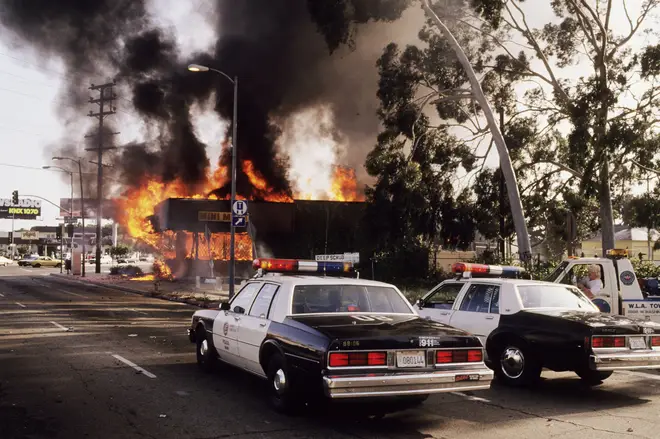
Within hours, news of the verdict had spread around Los Angeles, and anger grew. Widespread outrage over the verdicts, coupled with the systematic failures of the LAPD to support black and Latino communities in the city over the years prompted a series of riots that lasted five days.
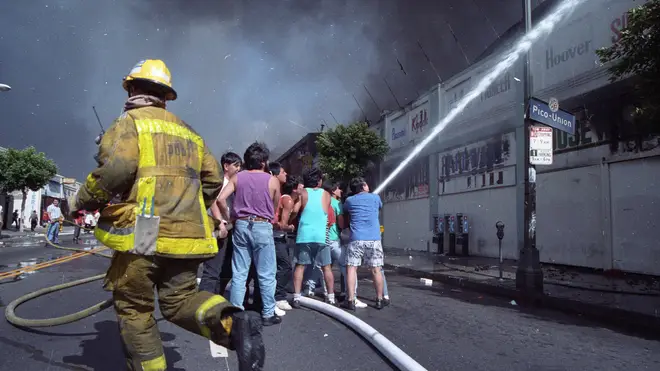
Unlike the protests in the wake of George Floyd's death, Rodney King was still alive. He went on TV and pleaded: "Can we get along? Can we stop making it horrible for the older people and the kids? I mean, we've got enough smog here in Los Angeles, let alone to deal with setting these fires and things ... It's just not right and it's not going to change anything."
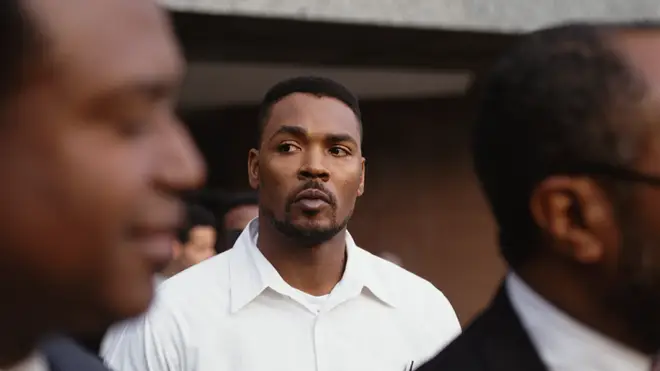
Los Angeles burned as Rage Against The Machine were recording their debut album. Tom Morello was teaching a guitar student how to play in the "Drop D" tuning and started playing the famous Killing In The Name riff. He later told Triple J: "I stopped the lesson, got out my little cassette recorder, and recorded it. It felt like a good one right from the beginning."
Taking the riff to his bandmates, the musicians found that they'd captured the anger that the Rodney King incident had caused within their community. Morello remembered: "We wrote that song before we even had a gig, so when we started clobbering people with those riffs and the ‘f--- you’– it was exciting from the very beginning."
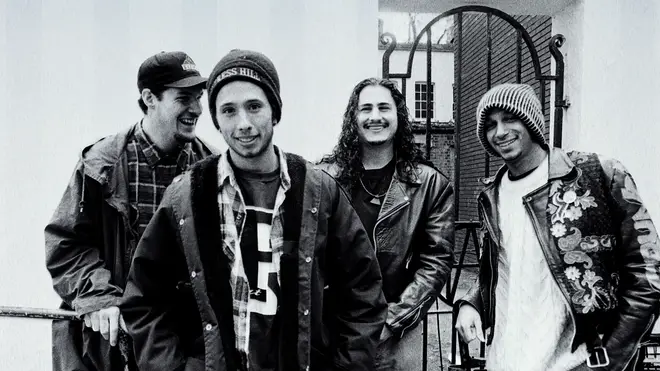
The song sees De La Rocha proclaim "Some of those that work forces are the same that burn crosses - drawing a direct link between the LAPD and the white supremacist group the Ku Klux Klan, who would use a burning cross to arouse fear in their victims. He then repeats: "You justify those that died by wearing the badge, they're the chosen whites."
The song ends with De La Rocha yelling "F--- you I won't do what you tell me!" 16 times.
Producer Garth Richardson recalled: "Zack and I had a long talk about the power of speech and how whatever he needed to say, he had to say it. Malcolm X was a major influence in Zack’s life, and this was not the time to back down."

Rage Against The Machine - Killing In The Name - 1993
Morello comments: "When we turn the lights on the crowd and that last chorus comes in – I think if you look under the dictionary for the definition of the word ‘apeshit’ there’d have to be a picture of people losing their mind to this song.”
Killing In The Name didn't get any airplay in the US for obvious reasons, but an edited version was a hit in the UK, making Number 25 in the charts in March 1993. But the song had a longer shelf life than that.
In December 2009, fans Jon and Tracey Morter began a Facenook campaign designed to break the stranglehold that reality TV contestants had on the Uk charts. They wanted Killing In The Name to be the Christmas Number 1, instead of chart hopeful Joe McElderry from The X-Factor. The song was the "antithesis" of the predictable pop fare of the season, swearing and all.
They were successful - and while this bit of seasonal fun may seem to trivialise the passion and anger that gave birth to the song, the band themselves gave the campaign the thumbs-up and even played a celebratory show at Finsbury Park the following summer.

Rage Against The Machine - Killing In The Name (Live At Finsbury Park)
Morello said: "On one hand, it’s a fun, flippant thing to give the finger to commercial pop music being rammed down a country’s throat, but on the other hand, it shows that there’s a David for every Goliath.
"It was really one of the highlights of the entire Rage experience for me personally."